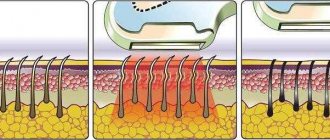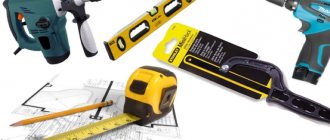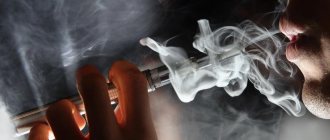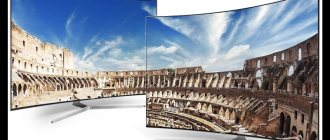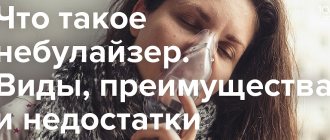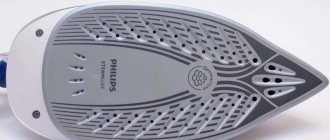Read in this article:
- Why does hair lose strength?
- The benefits and harms of using a hair dryer
- What are the dangers of naturally drying hair?
- How to properly dry your hair with a hairdryer?
- The most common mistakes when using a hair dryer
- Useful features of a hair dryer
- Convenient drying and healthy hair
A hair dryer has many advantages: it allows you to quickly tidy up your hair after washing and style it. But there is an opinion that such a procedure has a negative effect on curls, making them brittle and dry. Let's try to figure out whether it is possible to maintain the beauty of your hair by regularly using a hair dryer.
Why does hair lose strength?
Every girl dreams of healthy hair and a beautiful hairstyle. Many people are afraid to dry their hair with a hairdryer so as not to harm it. In fact, dryness, brittleness and other unpleasant symptoms can occur for completely different reasons that have nothing to do with drying:
- Against the background of many chronic diseases;
- Due to special climatic conditions;
- In case of insufficient intake of vitamins and nutrients into the body;
- Due to the incorrect selection of cosmetics.
It is quite possible that the real cause of hair loss is a scalp disease, and not a hair dryer at all. The same applies to other manifestations that are considered to be consequences of exposure to a jet of heated air.
“Too much hair loss is bad.”
Every day we lose approximately 150-200 hairs from our heads. But every year, in the fall and spring, our hair begins the telogen stage, also known as the resting phase of the hair follicle.
0
See all photos in the gallery
When this stage occurs, the hair stops growing, but remains on the head. That's why they fall out in such huge quantities. After this, new hairs appear in the empty hair follicles, and this is completely normal. However, if you notice that hair loss occurs much more often than 2 times a year and lasts more than 1 month, this is a reason to urgently consult a doctor! Possible causes may include: emotional and physical stress, sudden weight loss or pregnancy.
The benefits and harms of using a hair dryer
Drying your hair with a hairdryer provides many benefits, primarily saving time. If you have no more than half an hour to wash your hair and style it, you can’t do without such a device. Thanks to the hairdryer, you don’t have to go outside with undried hair, for example, after swimming in the pool or visiting a water park. In cold weather, this makes it possible to prevent colds.
In addition, the hair dryer:
- Helps create various styles using special attachments;
- Eliminates hair tangles;
- Equipped with an air cooling function;
- Gives volume to hair;
- Removes static charge using ionization, making hair more manageable and silky.
Many hair dryers have overheat protection. There are folding models, indispensable for travel, and options for different types of electrical networks.
Mistake: Drying without a concentrator attachment
That same flat nozzle that everyone throws away in the closet. This little thing helps to accurately direct the air flow onto the strand. The result is fewer tangled curls and split ends, and the hair is protected from overheating. And if you direct the air to the roots, it will give your hair extra volume.
What are the dangers of naturally drying hair?
However, naturally drying your hair can also be harmful. The fact is that each hair is covered with scales that swell and open when exposed to water. This leads to an increase in hair volume and at the same time makes it more brittle and deprives it of protection from external influences.
The longer the hair remains wet, the more its scales stretch. The result is cracking of the protective layer. It is especially dangerous to go to bed immediately after washing your hair. Due to involuntary movements and friction of the head against the pillow, the hairs become thinner, lose their vitality and become deplorable.
Natural drying has other negative nuances:
- With the modern pace of life, it is not always possible to wait until your hair is completely dry. As a result, all the negative factors described above are affected;
- When combing wet hair, its fragility increases significantly;
- By skillfully using a brush and a hair dryer, you can create a beautiful voluminous styling, but with natural drying this is not possible;
- Hair dried in this way becomes very tangled.
Undried hair will suffer much more from direct sunlight than hair that has been blow-dried.
Never start drying at the highest temperature
First, remember that the less often you dry your strong, thick and long hair at maximum temperature, the longer it will remain strong, thick and long.
Secondly, never start drying at the highest temperature. No, it wouldn't speed up the drying anyway, don't fool yourself. Start on medium mode - and after about five minutes you can move to maximum.
It is also better to finish the process in medium mode.
Even asphalt roads crack due to temperature changes - what do you want from delicate hair?
How to properly dry your hair with a hairdryer?
It turns out that using such devices is even more useful than waiting for your hair to dry on its own. However, this is only true if you know how to properly blow-dry your hair and follow a few simple rules:
- Immediately after washing, the curls should be wrapped in a warm towel for about 15 minutes to remove excess moisture, but do not wring out the curls by twisting the towel;
- When drying, it is better to choose medium or low temperature, since overheating is dangerous for the hair. It is easy to check the temperature indicator - the degree of heating should be comfortable for the back of the hand;
- The hairdryer should be applied from roots to ends, without lingering long on one strand;
- The device should be kept at a distance of about 40 cm from the hair;
- It is advisable to leave the curls slightly damp, since prolonged exposure to heated air can cause dry hair.
Curls need to be protected from negative influences. Numerous hair care products with thermal protection have been created specifically for this purpose. It is very convenient to use styling products with this property so as not to overload your hair with several different products. In addition, you need to avoid tightly tightening hairpins and elastic bands, especially for wet hair. You cannot constantly collect your curls in braids or a ponytail; from time to time, your hair should rest loose.
Mistake: Not using thermal protection
If you use a hairdryer once a week or more often, be sure to use heat protection. Such products can be washable or indelible. The former include shampoos and conditioners with heat-protective properties, the latter - sprays, creams and oils. You should choose thermal protection depending on your hair type. Those with dry hair should avoid alcohol-based products. If you have oily or normal hair, don't buy oil-based products.
The most common mistakes when using a hair dryer
One of the most common mistakes when drying hair is the direction of hair flow from ends to roots. The hair dryer should move in the opposite direction so that the scales do not lift and the moisture remains inside the hair. For the same reason, drying your hair with your head tilted has a negative effect on your curls, although it temporarily gives them additional volume. In addition, after such exposure, the strands become tangled and difficult to comb, which means they are even more damaged by the brush.
Do not keep the towel on your head for too long after washing. Due to fabric friction, hair weakens. Another important nuance is how to properly dry your hair using a diffuser. This device should not be put on the hair dryer right away. First you need to style your hair with a regular nozzle at low speed, and only then switch to a diffuser. By the way, the safest hair dryer attachments are plastic and ceramic, but heated metal can damage your hair. For thin hair, it is better not to use the maximum air speed.
It is better not to dry all the curls at once, but to do it one by one, dividing the hair into about 4 zones. To obtain volume, warm air must be directed onto the strands raised by a comb. It is better to start with the curls located in front.
Mistake: Pulling your hair down
There is no need to hold your hair by the ends: when drying, this reduces the potential volume. It’s better to stretch your hand up, grab the ends of your hair with a comb and direct a stream of warm air onto the strand. The hairstyle will be voluminous, but at the same time smooth and “alive”.
Useful features of a hair dryer
All modern hair dryer models have a cold air function. This is a very useful option for several reasons. Firstly, it helps protect curls from moisture loss and drying out. Secondly, cold air perfectly fixes the styling, makes it light and smooth, and ensures that it retains its shape for a long time. Thirdly, this option is indispensable for hair extensions, since it does not destroy the adhesive composition.
Another useful function of a hair dryer is ionization. Hair accumulates static tension, so its scales rise and the protection weakens. To neutralize the charge, an ion generator built into the hair dryer is used. It produces particles with a negative charge that help smooth out the scales and give the curls a healthy shine.
Static electricity attracts dust and dirt, so strands get dirty faster, especially under a hat. Ionization makes it possible to avoid this effect and keep your hair clean and attractive for longer.
An excellent solution would be the Beurer HC 30 hairdryer, equipped with the Cool Shot function for instant styling. It is made of high quality chrome, which ensures durability and stable operation. Its increased durability is also guaranteed by automatic overheating protection.
How to direct the air stream so as not to damage your hair?
Have you tried stroking a cat against the grain? Even if you haven’t tried it, you’ve probably heard that they don’t like it. What am I talking about? Besides, your hair is not monolithic. Under a microscope it is obvious that they are covered with microscales. If these microscales are smoothed, the hair will be protected, moisture will not evaporate from its core, and dirt will not get inside. If you ruffle these microscales, the result will be exactly the opposite.
Therefore, it is worth directing the air flow of the hair dryer from top to bottom - from the roots of the hair to their ends.
It's not difficult at all, once you get used to it - but it gives an amazing effect in the long run.
Myth #4: Flat irons and curling irons can be used immediately after blow-drying.
Professor Tim Moore generally has a very negative attitude towards all heat styling devices except a hair dryer.
He claims that with the help of proper and competent care, with regular cutting of split ends and careful treatment of curls, just a hairdryer is enough for perfect styling. But in any case, if you cannot do without a straightening iron or curling iron, do not use them immediately after drying. The fact is that the hair dryer does not dry the hair completely; one way or another, it is still saturated with moisture. Just imagine what happens to water at high temperatures: it simply boils! This is exactly what will happen inside your hair, which still contains moisture, if you run a hot iron or curling iron through the strand. Drops of moisture expand instantly, boiling and incinerating the contents of the hair - the very cortex that is its basis.
Fact: Only use heat tools on COMPLETELY dry hair.
After thoroughly drying your hair with a hairdryer, you should wait at least another 20-30 minutes for the moisture to completely evaporate. If possible, wait even longer. And if possible, do not use contact devices for heat styling at all (irons, curling irons, tongs, etc.). Set the temperature on devices to no higher than 200 degrees. If the curls can be styled at the minimum temperature of the device, use this, try different modes, experiment.
And once again, do not forget about heat-protective styling products, but under no circumstances use oil or oil-based products before heat styling. Oil on your hair when exposed to an iron or curling iron will simply “fry” the curls as if in a frying pan, and this is even worse than boiling water inside the hair. Oil should be applied to the strands only after styling is completed in order to “seal” split ends. And be sure to wash it off well with shampoo the next time you wash it.
Author: Tatyana Maltseva
Pros and cons of thermal and natural drying
Among the advantages of thermal drying are:
- high drying speed;
- the ability to easily style your hair in various hairstyles;
- minimal risk of getting tangles (the likelihood of strands getting tangled is virtually eliminated);
- ionization option (it helps reduce the level of static electricity and makes the curls silky and manageable).
Reference! If you do not follow the manufacturer's recommendations, using a hair dryer can cause hair damage. They can become brittle, dry and split.
When using natural drying, your hair has time to absorb the moisture it needs. They become more alive and strong. However, there are also disadvantages:
- long duration of the procedure (not every girl has enough time);
- inability to create a beautiful hairstyle, since you won’t be able to style your hair without a hairdryer;
- It is not recommended to comb wet strands - this can cause them to become brittle;
- the curls become very tangled and it takes time to get them in order;
- going out into the fresh air in the cold season with your head not completely dry is a sure way to catch a cold.
Important! Drying wet hair in direct sunlight is prohibited as it is quite sensitive to ultraviolet radiation. Any hat will help protect them.
Before choosing natural drying, you need to study all its features. Experts recommend that the first step is to wrap your head in a warm towel - it will absorb excess water. Due to the duration of the procedure, it is best to perform it in the evening. Although there is a possibility that in the morning your hair will be a very unsightly sight and you will need to use a hairdryer to get it in order.
If we draw a line under all of the above: both types of drying have both pros and cons. The modern rhythm of life does not allow us to completely abandon the use of the device.
Rules for drying curls
It remains to find out whether it is possible to dry curly hair with a hairdryer and how to do it correctly. For those with curly hair, it is important to use the right attachment. If the strands are long, a diffuser with a comb effect will do. Large curls are tidied up with a bristle attachment. Also, for curly strands you need to choose special cosmetics:
- Air conditioners. They are used to treat the head after washing. The substances in the composition ensure smoothing of scales and prevent frizz. After a few minutes, the conditioner should be rinsed off. To keep your hairstyle well in place, you can use leave-in conditioners.
- Serums or gels for fixing curls.
- Varnishes that provide easy fixation. If the product is strong, the curls will become motionless and the hairstyle will look unnatural.
Here's how to properly dry curly hair:
- Treat your hair with a protective compound.
- Grab a wet strand and bring the hairdryer to your head, pressing it against your skin. It is important that the air reaches the roots.
- Hold the device in one position for several seconds until the roots dry, and then perform circular movements, lifting the strands.
- After the roots have dried, move the hair dryer away and continue drying from a distance.
Drying it completely is a mistake; your hair will become too fluffy. Therefore, you need to leave your hair slightly damp.
At the end, you need to lower your head and massage the roots to straighten the curls. Next you need to treat the strands with serum or gel, and if desired, spray with varnish with a light fixation effect.
